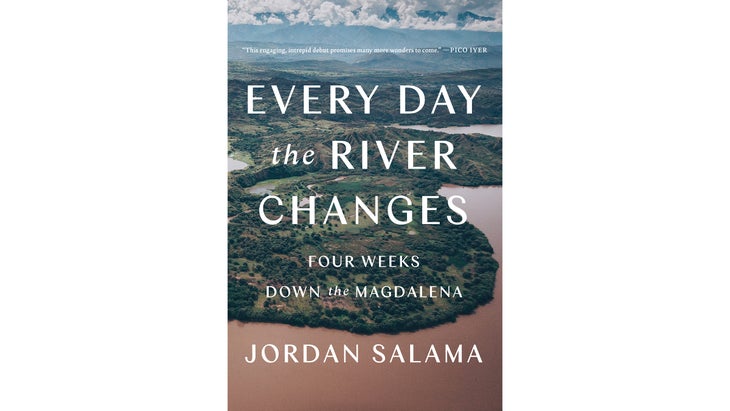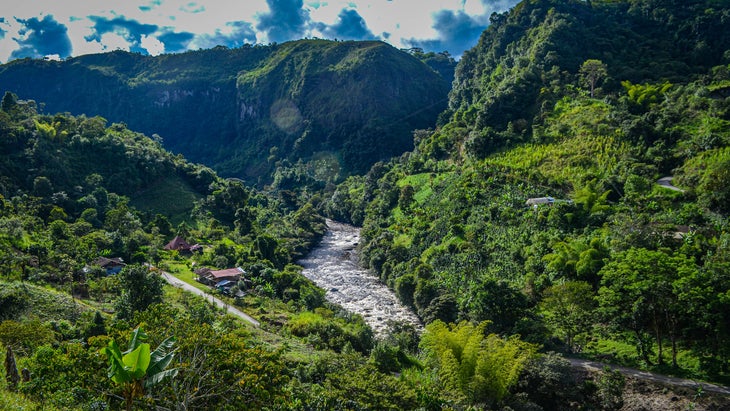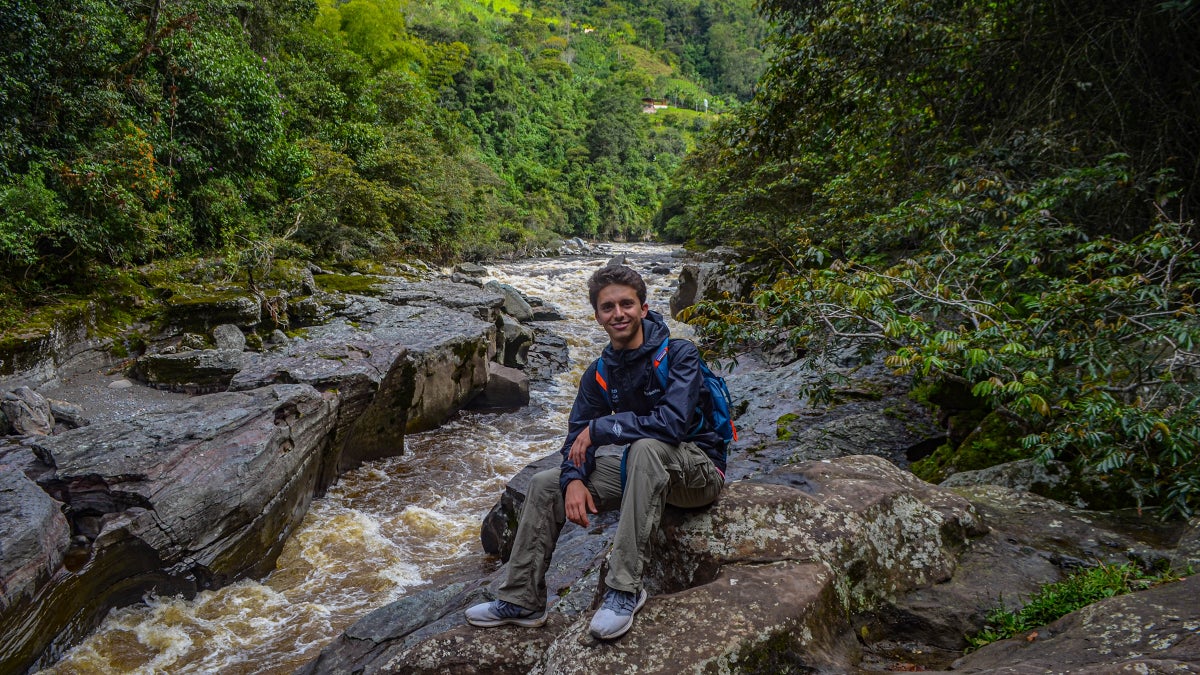No products in the cart.
Outdoor Adventure
Jordan Salama on His Travelogue ‘Every Day the River Changes’
When Jordan Salama was an undergraduate at Princeton University in 2018, he set out to travel the length of Colombia’s Magdalena River as part of his college thesis. The project turned into Every Day the River Changes, a book about the four-week trip. It’s an interlocking series of stories about the people he encountered—from Indigenous groups at its headwaters to a man spreading literacy with a donkey-based mobile library—and a longitudinal look at how the history and geography of the country are intertwined.
Every Day the River Changes was the December-January pick for the newly relaunched Outside Book Club, and we’ve been discussing it for the past two months in our Facebook group (which we encourage you to join). Recently, we talked to Salama about his debut release, specifically how he explored the Magdalena from source to sea, the most interesting people he met on the river, and why he didn’t want to tell the same old story about Pablo Escobar’s hippos.

Outside: Where did the idea for a book about Colombia, and particularly the Magdalena, come from?
Salama: This project began when I was still in school. After my first year of college, I got to travel to Colombia in 2016 as an intern for the Wildlife Conservation Society. When I told people I wanted to go, they were terrified. Colombia has this reputation and stigma in the U.S. It’s known one-dimensionally as a culture of violence, and in 2016, people were not excited about 19-year-old me going there.
But I had one family friend, Sandra Marlem-Muñoz, my old piano teacher, who said I could stay with her grandma while I was an intern. Turns out her grandma was a 96-year-old who couldn’t get out of bed and wouldn’t let me leave the house after 7 P.M. But I became fascinated by this country of cultural and natural diversity, so at night when I was locked in, I kept journals of the people I met and the experiences I had. A few years later, when I was deciding on a subject for my college undergrad thesis, I looked back at journals and realized that if I wanted to understand Colombia, I had to travel the length of the river.
This is really a story about migration and immigration and the way people travel and move. Did you know it was going to be about that from the beginning?
I come from this family of wanderers and migrants. My family is the product of lots of different migrations—most of them involuntary. My mother was a Jew who had to leave Baghdad in the seventies, and my father’s family were Syrian Jews in Argentina. I saw in Colombia, and especially in communities of the Magdalena, many identities in one, many nations in one, and saw so many places where people had similar stories to my family, so it felt important to address that.
You mentioned the country’s reputation of violence, and that occasionally comes up in the book. How did you deal with that on the ground?
It took a lot of logistics to be safe for my 2018 trip. It started with Sandra’s network of friends and family, which led to introductions along the Magdalena. When I set off, I had people willing to receive me almost everywhere I went. I was traveling by myself but was never really alone. Meeting all these people along the way, whether it was a friend of a friend or a friend of a professor, was how I created a line of trust along the river.
How did those connections translate into your reporting?
I didn’t go into the trip knowing what kind of stories I would find. It was kind of a moving surprise. I improvised, and a lot can happen on the fly. In almost every river town, someone would say, “You have to talk to this person or check out this story.” For instance, in Mompox, someone mentioned this 89-year-old silver filigree jeweler. I wasn’t planning to have that be a part of the story, but he ended up being the heart of the section there.

Did you ever feel like the trip wasn’t going to happen the way you wanted, or that the whole thing would fall apart? Four weeks isn’t a very long time to try to see an entire river.
Oh yeah, plenty. I will never forget my time in Estación Cocorná, which was one of the hottest places I’ve ever been in my life. I was in this room I was renting in the town, and I was laying there at 3 P.M., in the height of the heat of the day, just sweating with no idea of how I was going to traverse the next stretch of the river. I wanted to go with someone who could explain what I was seeing, but I didn’t have anyone, and I was thinking I was going to have to stay in Estación Cocorná because I had no one to do it with. Then I got a message from Alejandra Mayorca, a friend of a friend, who has become a lot of people’s favorite character in the book because she lives the way a lot of people want to live their lives. She took a 20-hour bus to the river to meet me there, to take a seven-hour boat ride, to take another eight-hour bus ride. People stepped up like that in a lot of places.
What was your favorite place along the river?
Mompox. I can’t stop thinking about it. It feels like it’s out of a Gabriel García Márquez novel. He was there for a while, and a lot of people there said that his fiction felt like journalism that documented their lives. And in that town, I found traces of my own family, indirectly.
Mompox happens to be one of the main places Syrians and Lebanese and Palestinian people settled when they came to South America, like my family did, so that was really cool to see.
Márquez comes up frequently in the book. Who else were you reading, or influenced by, when you were working on this?
We could talk a lot about Márquez—anytime you’re talking about Colombia or the Magdalena, he comes up. I’ve also been lucky to have some really good mentors, especially during my time at Princeton. John McPhee was the teacher who convinced me that this was something I could do as a career. He writes about canoes and people and nature, so our interests really clicked. I didn’t know what creative nonfiction could be, but he helped me see it. The other person at Princeton is Pico Iyer. It’s interesting, the two of them write very differently. He writes a lot about himself and his identity and what he’s feeling, and I think my writing is somewhere in the middle of those two.
How did you think about telling stories about Colombia when you were writing the book?
I didn’t want to lean into the stereotypes about Colombia, and so many of the stories aren’t as nuanced as they should be. Look at drug lord Pablo Escobar’s escaped hippos. Escobar dominates so much of what’s written about Colombia in the U.S., so I didn’t just want to talk about him, but the hippos are really impacting the river. It felt important to go see how they’re terrorizing the fishermen, and to speak to the people who are impacted by the situation. Very few people have actually gone and seen those kinds of impacts. The locals said they’d been treated by the public as kind of, like, cartoons.
What do you want people who haven’t read the book to know about it?
The biggest challenge with this book is getting it into the hands of people who don’t realize they’re interested in Latin America or Colombia. I think it might seem far off and hard to grasp, but it’s filled with people who are bringing their communities out of decades of conflict, inspired by the river. And there’s a traveling-donkey library.
This interview has been edited for length and clarity.
Source link

